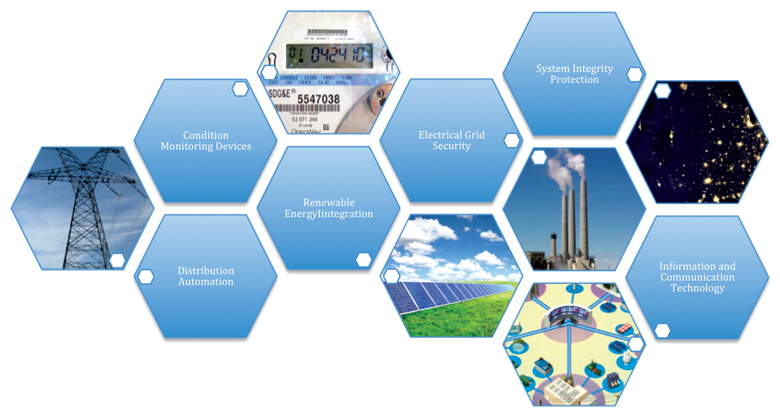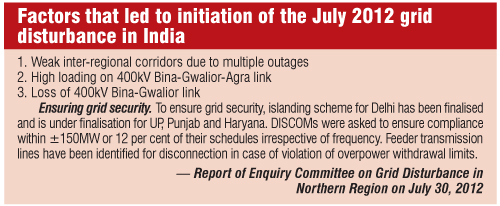Imagine a country with no load shedding, power cuts or blackouts. A new era of reliable and efficient electricity supply is what the smart grid concept promises.
Integrating modern digital electronics technology into the electrical power grid enables the utility to detect, monitor and respond digitally to any changes, thus making it a smarter version of the grid and earning it the name ‘smart grid’ in the process.

The current power grid is based on decades-old technology that makes it prone to a lot of outages. An imbalance in the stress on a power grid could cause electricity disruption. If this imbalance is not corrected in time, it could have a domino effect, affecting the functioning of other critical utilities.
By implementing the smart grid concept, the grid will be armed with a plethora of sensors, controllers, communication equipment and new technology that enables the grid to be truly automated—thus enabling it to promptly respond to any incidents in the grid. “This also means that the smart grid technology is a multidisciplinary area, requiring power engineers, IT, telecom and modelling forecasting to work together,” says Sandra Diethelm, CEO, Exuta (India) Pvt Ltd.
How a smart grid responds to an outage
When a disturbance in the grid is initiated, the sensing and monitoring mechanism of the grid detects the cause of the outage and enables the grid to take measures to quarantine it so it does not affect the rest of the grid. In the quarantined grid, the technology begins working on recovering electricity distribution to the critical services first—providing power to hospitals, police institutions, communications, etc. It will also loop in consumer-controlled power-generation sources when the utility is unable to provide enough power, thus fostering energy trade within the community as well.
Evolution of smart grid technologies
Here we look at some recent advances in various aspects of smart grid technologies.
Even smarter meters. Smart meters are not only limited to measurement, but also play an integral part in deriving the quality of power. “An energy audit meter not only measures the power on a relative parameter, but also measures its quality,” explains A.V. Srinivasan, area manager—south, M.B. Control and Systems Pvt Ltd. He further explains that smart audit meters analyse the power by decoding parameters such as harmonics, power factor and so on.
The newer meters not only monitor and provide data to services connected to it but also provide control over the network to designated control centres. With these meters, actions such as overshooting your maximum demand (MD) control or introducing harmonics into the grid will trigger a response from the control centre directly to your meter (which is now more of a controller).

In smart meter chips, metrology is an analogue function where we accurately detect energy across a wide current range. “Integrating multiple analogue functions into one chip is a tremendously difficult task because it involves merging functions that were originally optimised in different process geometries. Ultimately, the biggest challenge is in making the performance of analogue functions similar or better,” says David Andeen, segment manager—smart grid, Maxim Integrated.
One indigenous example of this technology is in the MREV e2o electric vehicle manufactured by Mahindra Reva Electric Vehicles Pvt Ltd. Stated as Car2Home technology, it allows to power your home by using a car’s power during times of need. An on-board computer smartly regulates the power supplied to your home, and a full battery can ensure that the house is powered up for several hours depending on the load. This technology is complemented by the Sun2Car technology, in which a 10 sq m solar panel is set up to provide sufficient energy to power your car.
However, Diethelm says, “The electricity network is not designed for two-way power flows. This means that the network can experience issues when people generate power on their own and supply it to the grid. A common issue is higher than normal voltage levels when connecting solar system, which then damages appliances of consumers who are connected to the same grid.”
Evolving communication standards. One of the challenges in this area is the lack of a standard protocol for communication. “Various state utilities are experimenting in a different manner, for instance Maharashtra has looked at Zigbee for AMR-related data collection,” explains Thakurdesai.
“The current focus is on powerline communication (PLC), where we have defined G3 and we are also implementing additional solutions. We have also partnered with RadioPulse for ZigBee solutions.,” adds Andeen.
Syam Madanapalli, CEO and co-founder, iRam Technologies, explains why a smart grid network is best based on IPv6 (the successor to IPv4; the next generation protocols for the Internet) and IEEE 802.15.4 (the wireless standard from IEEE for the Wireless Personal Area Networks (WPANs)).






